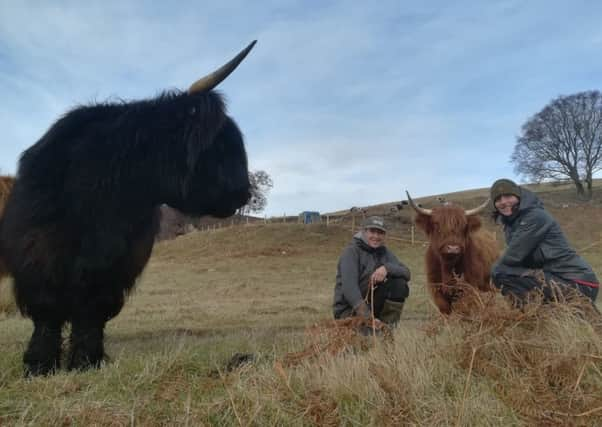Number of women crofters doubles in four years


While crofting has generally been perceived as a male-dominated pursuit, the gender profile is starting to shift. Women now account for more than one in every four registered crofters in Scotland.
A new survey of crofters across the country shows that whereas women made up just 13 per cent of crofters in 2014, the proportion has jumped to 26 per cent this year.
Advertisement
Hide AdAdvertisement
Hide AdPatrick Krause, chief executive of the Scottish Crofting Federation (SCF), the largest association of small-scale food producers in the UK, described the findings as “fantastic”. He pointed out the number of women finalists in awards recognising Scotland’s best new crofters far outweighed the men.
Krause said: “There is a high proportion of young women among the people who are coming into crofting. At the last several meetings of our young crofters’ group, there have been a lot of women present, so it is clearly a trend.”
Krause said the increase in female crofters could also be explained by shifts away from men being automatically named as tenants.
He said: “Although it’s hard to know the reasons for the change, one of them is probably the fact that more women in husband-and-wife teams are being named as the registered crofter.
“That has not always been the case and fortunately the rules about having only one named tenant of a croft are going to change over the next couple of years.”
The findings chime with evidence gathered by the SCF, which said female-only agricultural training is necessary to meet an increasing demand from women looking to run crofts.
Last year, Sally Shortall, professor of rural economy at Newcastle University, spearheaded an extensive report into the role of women in Scottish agriculture.
The report said the long-standing cultural practice of passing on large farms intact to one son was the single biggest barrier to women’s entry into agriculture.
Advertisement
Hide AdAdvertisement
Hide AdHowever, Krause pointed to the example of Lynn Cassells and Sandra Baer as women who had embraced the crofting life overseeing a mixed sheep and cattle herd at Lynbreck, a 150-acre croft near Strathspey.
“It’s a really positive thing for the farming industry, which is very traditional, but is having to become very competitive,” said Cassells.
The survey points to increased diversification amongst crofters. While the proportion of those keeping livestock has dipped from 83 per cent to 80 per cent since 2014, those opening bed and breakfasts and holiday lets has nearly doubled over the same period. The shift away from traditional agricultural work also saw a rise in those crofters providing a leisure offering – up from 3 per cent to 7 per cent – and an increase in those involved in wood processing – 5 per cent this year compared with 2 per cent.
Crofting was established in the late 19th century as a way to help communities who had suffered as a result of the Highland Clearances, providing them with security against eviction.
The new survey, commissioned by the Scottish Government, shows heightened concerns for the future, with 95 per cent of the view that working on their small agricultural holdings was no longer economically viable without some additional source of income.
The quadrennial survey was carried out by Ipsos MORI, which sent questionnaires to 4,000 crofts across Scotland.